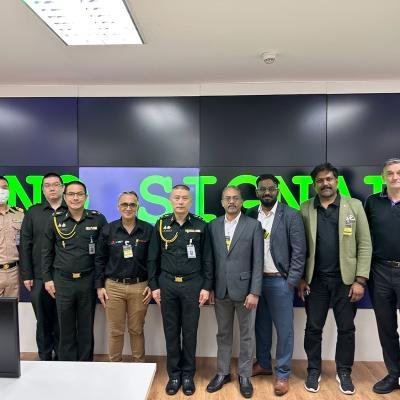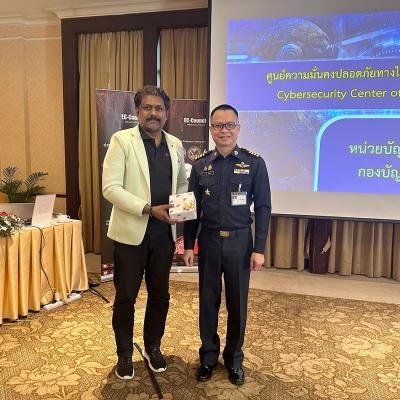The digital art world has undergone a revolutionary transformation with the advent of Non-Fungible Tokens (NFTs). NFTs have opened new avenues for artists to monetize their digital creations, allowing them to tokenize and sell their work as unique digital assets. However, as with any innovative technology, cybercriminals are quick to seize opportunities for illicit gains. NFT art theft has emerged as a significant cybersecurity concern, posing threats to artists and investors alike. In this comprehensive blog, we will explore the various tactics employed by cybercriminals to steal NFT art, as well as strategies to protect against these threats.
Understanding NFTs and Their Vulnerabilities
To comprehend the risks of NFT art theft, it is essential to grasp the basics of NFTs and the underlying technology. NFTs are cryptographic tokens that represent ownership of a specific asset on a blockchain. Each NFT is unique and indivisible, making it ideal for representing digital art, collectibles, and other unique assets. These tokens are often created and traded on blockchain platforms, such as Ethereum. The blockchain ensures transparency, provenance, and immutability, making NFTs an attractive option for artists and collectors.
The process of creating an NFT involves minting a new token on the blockchain, which acts as a digital certificate of ownership for the associated asset. This certificate is stored in a smart contract, a self-executing contract with predefined rules and conditions that govern the NFT's ownership and transfer. However, despite the inherent security offered by blockchain technology, NFTs are not immune to vulnerabilities.
Smart contracts, while revolutionary, are complex pieces of code, and any bug or vulnerability can lead to unauthorized access, manipulation, or theft of NFTs. Several instances of smart contract exploits have occurred in the past, resulting in substantial financial losses for users and platform operators.
Phishing and Social Engineering Attacks
Phishing attacks are a persistent threat in the digital landscape, and the world of NFTs is no exception. Cybercriminals employ various social engineering tactics to trick artists and collectors into revealing their private keys, passwords, or other sensitive information. Phishing attacks can take the form of deceptive emails, fake websites, and even malicious applications.
In the context of NFT art theft, phishing attacks are particularly concerning as they can grant cybercriminals access to the victim's crypto wallet. By impersonating legitimate NFT platforms or exchanges, cybercriminals attempt to deceive users into providing their login credentials, private keys, or other authentication factors.
To protect against phishing attacks, users must exercise caution when clicking on links or providing sensitive information online. Authentic websites and platforms often use secure HTTP connections (https://) and have digital certificates that can be verified in web browsers. Moreover, enabling two-factor authentication (2FA) adds an extra layer of security to NFT-related accounts and wallets.
Smart Contract Vulnerabilities
Smart contracts are at the heart of NFT transactions, governing the ownership and transfer of digital assets. While blockchain technology itself is secure, smart contracts are created by human developers, and errors can occur during their implementation. These errors can leave vulnerabilities that cybercriminals can exploit.
One notable example of smart contract vulnerabilities in the NFT space is the "reentrancy" bug. This vulnerability allows an attacker to repeatedly re-enter a smart contract and drain its funds. This bug was infamously exploited in the infamous "DAO Hack" of 2016, where millions of dollars' worth of Ether was stolen.
To mitigate smart contract vulnerabilities, thorough auditing and testing are crucial. Platforms and developers should conduct comprehensive security audits and employ best practices, such as code reviews and formal verification, to identify and fix potential issues before deploying smart contracts.
Crypto Wallet Security
The security of crypto wallets is paramount for NFT art owners since these wallets store the private keys necessary to access and manage NFT assets. There are various types of wallets available, ranging from online exchanges to hardware devices. Each type carries its level of security and convenience.
Online wallets, while accessible and user-friendly, may be more susceptible to hacking attempts and phishing attacks. In contrast, hardware wallets offer enhanced security by storing private keys offline. Paper wallets, on the other hand, involve printing the private keys on a physical medium, providing an extra layer of protection against digital threats.
To enhance wallet security, users should adopt best practices such as enabling 2FA, using strong passwords, and keeping backup copies of private keys in secure locations. It is also essential to keep wallets and associated software updated to prevent potential vulnerabilities.
Platform Security and Regulation
NFT art platforms play a pivotal role in facilitating the creation, sale, and exchange of digital assets. These platforms are expected to ensure a secure environment for artists and collectors. A platform's security measures should cover aspects such as user authentication, data encryption, and protection against cyber attacks.
In addition to platform-level security measures, the adoption of industry-wide regulations and standards can significantly bolster the safety of NFT art transactions. Regulatory frameworks can promote transparency, accountability, and fair practices within the NFT ecosystem.
However, it's crucial to strike a balance between regulation and decentralization. NFTs' underlying blockchain technology is built on the principle of decentralization, which grants users control over their assets and transactions. Striking the right balance between regulation and decentralization ensures that the NFT art market remains secure without compromising its fundamental principles.
Intellectual Property and Copyright Infringement
NFT art theft is not limited to direct stealing; it can also involve copyright infringement and intellectual property violations. Artists and creators need to be vigilant in protecting their digital artwork from unauthorized reproduction and distribution.
The digital nature of NFT art makes it susceptible to unauthorized duplication and distribution, raising concerns about copyright infringement. Artists may find their work copied and sold as NFTs without their consent, leading to financial losses and loss of control over their artistic creations.
To protect against intellectual property violations, artists can consider watermarking their digital art or providing certificates of authenticity as part of the NFT metadata. Additionally, some platforms offer intellectual property protection services, allowing artists to assert their rights and enforce their copyright claims within the blockchain.
DeFi and NFTs - New Opportunities, New Risks
The intersection of Decentralized Finance (DeFi) and NFTs has created exciting possibilities for artists and investors. DeFi platforms offer new ways to finance and support NFT art projects. However, this integration also brings unique risks, as cybercriminals can exploit weaknesses in DeFi protocols and smart contracts.
DeFi platforms provide liquidity and decentralized financial services, enabling artists to raise funds for NFT art projects through token sales or crowdfunding campaigns. The integration of DeFi and NFTs unlocks new avenues for artists to monetize their creations and engage with a broader audience.
Yet, the nascent nature of DeFi protocols also exposes them to potential vulnerabilities and risks. Smart contract vulnerabilities, flash loan attacks, and yield farming exploits are some examples of DeFi-related threats that could indirectly impact NFT art platforms and investors.
To mitigate these risks, artists and investors should thoroughly assess DeFi projects and platforms before participating. Additionally, using decentralized exchanges (DEXs) with strong security measures can provide an added layer of protection against potential cyber attacks.
Community Awareness and Education
In the fight against NFT art theft, community awareness and education play a pivotal role. The NFT community must work together to spread awareness about the various cybersecurity threats and best practices for maintaining a secure digital art ecosystem.
Artists, collectors, and platform administrators can play an active role in promoting cybersecurity education. By staying informed and proactive, the NFT community can collectively combat cyber threats and protect the integrity of digital art transactions.
Collaboration between platforms, security experts, and the wider NFT community can lead to the identification and resolution of potential security vulnerabilities. Open discussions about recent security incidents and sharing best practices can help enhance the overall security of the NFT ecosystem.
Examples and Evidence:
- The Beeple Art Heist: One of the most infamous NFT art thefts occurred in 2021 when a hacker exploited a vulnerability in an NFT marketplace to steal an artwork by the renowned digital artist Beeple. The hacker gained unauthorized access to the platform's smart contract and transferred the valuable NFT to their own wallet, effectively stealing the artwork and its associated value. This incident highlighted the importance of smart contract security and the need for platforms to implement robust security measures.
- Phishing Scams Targeting Artists: Artists in the NFT space have fallen victim to phishing scams where cybercriminals impersonate NFT platforms or collectors to deceive artists into providing their private keys or wallet information. In one case, an artist received an email that appeared to be from a well-known NFT platform, requesting them to verify their account details. Unfortunately, the artist unknowingly provided their login credentials, enabling the cybercriminal to access their NFT assets and steal their valuable artwork.
- The DAO Hack Redux: In 2016, the DAO (Decentralized Autonomous Organization) hack shocked the cryptocurrency community, resulting in millions of dollars worth of Ether being stolen due to a smart contract vulnerability. While this hack wasn't specific to NFT art theft, it underscores the potential risks associated with smart contract vulnerabilities. The incident served as a wake-up call for the blockchain community to prioritize security audits and testing for all smart contracts, including those involved in NFT art transactions.
- Copycat NFTs and Copyright Infringement: NFT art theft is not limited to direct stealing but also includes cases of copyright infringement and intellectual property violations. Some cybercriminals have taken advantage of the digital nature of NFTs to create copycat versions of popular artworks without the original artist's consent. These counterfeit NFTs undermine the value and authenticity of the original artwork, leading to financial losses for the artists and confusion among collectors.
- NFT Art Platforms Vulnerabilities: NFT marketplaces and platforms have also faced security breaches that exposed users' sensitive information and NFT assets. In one case, a prominent NFT platform experienced a data breach where hackers gained unauthorized access to users' accounts, compromising their private keys and personal data. This breach not only affected individual users but also eroded trust in the platform's security measures and raised concerns about the overall security of NFT marketplaces.
- DeFi-NFT Integration Attacks: The integration of Decentralized Finance (DeFi) protocols and NFTs has created new opportunities for artists and investors. However, it has also introduced new risks. Some cybercriminals have exploited DeFi protocols' vulnerabilities to manipulate NFT markets or execute fraudulent transactions involving NFTs. These attacks can have a significant impact on NFT prices and the overall confidence in the NFT market.
- Lack of Copyright Enforcement on NFT Platforms: NFT platforms, while enabling artists to tokenize their work, may not always have robust mechanisms to enforce copyright and intellectual property rights. As a result, some artists have reported instances of their copyrighted works being minted and sold as NFTs without their consent. The lack of effective copyright enforcement on these platforms has raised concerns about the protection of artists' intellectual property in the digital art realm.
Conclusion
As digiALERT, we have explored the concerning issue of NFT art theft and the various tactics employed by cybercriminals to exploit the digital art market. The rising popularity of Non-Fungible Tokens (NFTs) has brought unprecedented opportunities for artists and collectors, but it has also attracted the attention of malicious actors seeking to capitalize on vulnerabilities.
NFT art theft is a multifaceted problem, encompassing phishing attacks, smart contract vulnerabilities, crypto wallet security, and intellectual property infringements. Cybercriminals use social engineering tactics to deceive artists and collectors into revealing sensitive information, jeopardizing the security of their NFT assets. Smart contract vulnerabilities pose significant risks, enabling unauthorized access and manipulation of NFTs. Securing crypto wallets and adopting best practices is crucial to prevent unauthorized access and potential theft of digital assets.
As a cybersecurity firm, our focus is on raising awareness and providing guidance to protect artists and investors in the NFT space. We emphasize the importance of community awareness and education in the fight against NFT art theft. By staying informed and proactive, the NFT community can collectively combat cyber threats and foster a secure digital art ecosystem.
We encourage NFT platforms to prioritize security measures, employ thorough smart contract audits, and adhere to industry-wide regulations to create a safe environment for artists and collectors. Intellectual property protection is essential to safeguard artists' creative works and prevent copyright infringement within the NFT ecosystem.
The integration of Decentralized Finance (DeFi) and NFTs presents exciting opportunities, but it also introduces new risks. Artists and investors should exercise caution and due diligence when engaging with DeFi platforms to mitigate potential vulnerabilities.
As digiALERT, we remain committed to assisting the NFT community by providing cybersecurity solutions, promoting best practices, and enhancing security awareness. Together, we can safeguard the future of NFTs as a groundbreaking and transformative art medium, fostering a secure and thriving digital art market for all stakeholders involved.







